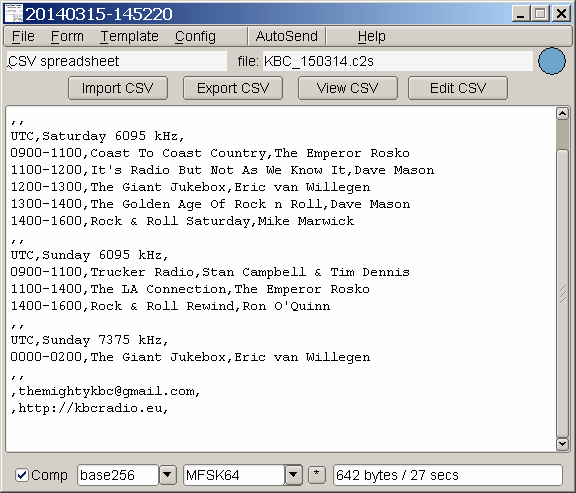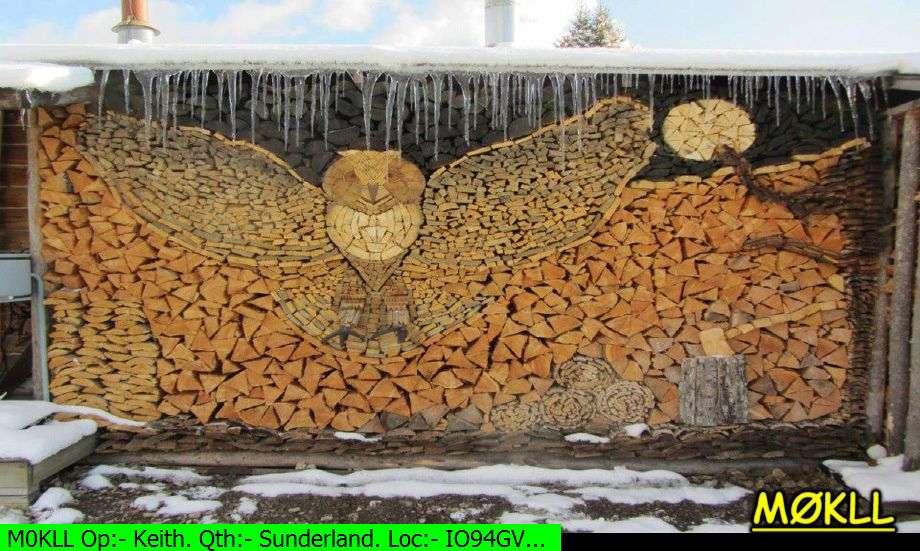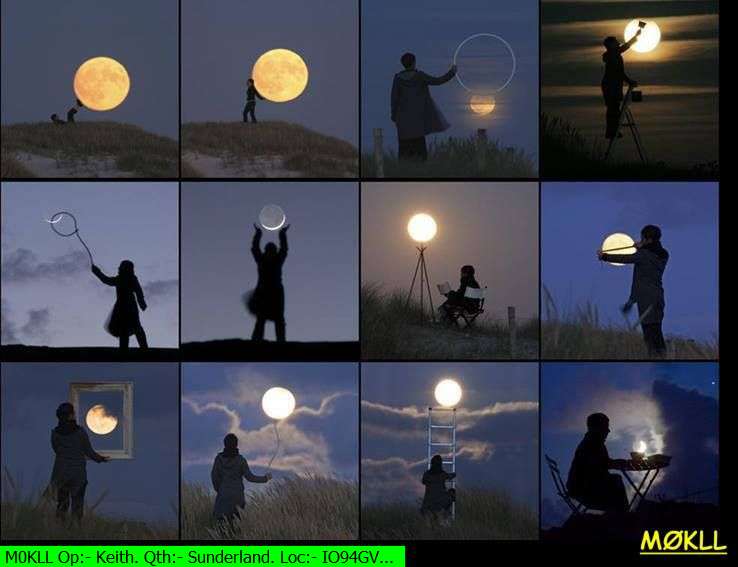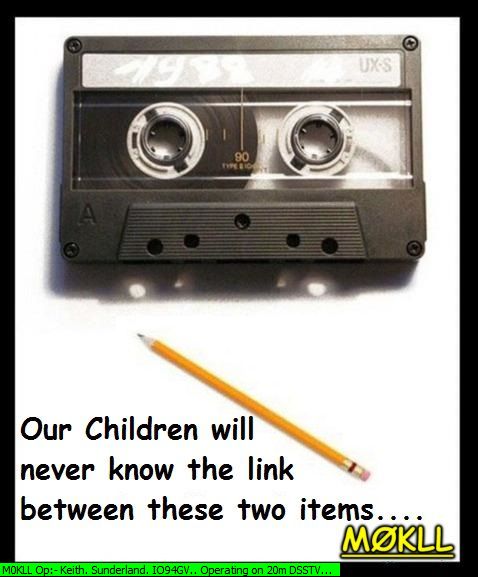www.rhci-online.net/radiogram/radiogram.htm
██╗ ██╗██████╗ ██████╗ ██████╗ █████╗ ██████╗ ██╗ ██████╗ ██████╗ ██████╗ █████╗ ███╗ ███╗
██║ ██╔╝██╔══██╗██╔════╝ ██╔══██╗██╔══██╗██╔══██╗██║██╔═══██╗██╔════╝ ██╔══██╗██╔══██╗████╗ ████║
█████╔╝ ██████╔╝██║ ██████╔╝███████║██║ ██║██║██║ ██║██║ ███╗██████╔╝███████║██╔████╔██║
██╔═██╗ ██╔══██╗██║ ██╔══██╗██╔══██║██║ ██║██║██║ ██║██║ ██║██╔══██╗██╔══██║██║╚██╔╝██║
██║ ██╗██████╔╝╚██████╗ ██║ ██║██║ ██║██████╔╝██║╚██████╔╝╚██████╔╝██║ ██║██║ ██║██║ ╚═╝ ██║
╚═╝ ╚═╝╚═════╝ ╚═════╝ ╚═╝ ╚═╝╚═╝ ╚═╝╚═════╝ ╚═╝ ╚═════╝ ╚═════╝ ╚═╝ ╚═╝╚═╝ ╚═╝╚═╝ ╚═╝
|
http://www.kbcradio.eu/
RSID: <<2014-03-15T12:30Z
MFSK-64 @
6095000+1500>>
|
<STX>
... start
[WRAP:beg][WRAP:lf][WRAP:fn KBC_150314.c2s]<flmsg>1.1.34
:hdr_fm:19
VOA 20141203120006
:hdr_ed:19
VOA 20141203114634
<csvform>
:mg:591 ,THE MIGHTY KBC,
,Weekend Schedule,
,,
UTC,Saturday 6095 kHz,
0900-1100,Coast To Coast Country,The Emperor Rosko
1100-1200,It's Radio But Not As We Know It,Dave Mason
1200-1300,The Giant Jukebox,Eric van Willegen
1300-1400,The Golden Age Of Rock n Roll,Dave Mason
1400-1600,Rock & Roll Saturday,Mike Marwick
,,
UTC,Sunday 6095 kHz,
0900-1100,Trucker Radio,Stan Campbell & Tim Dennis
1100-1400,The LA Connection,The Emperor Rosko
1400-1600,Rock & Roll Rewind,Ron O'Quinn
,,
UTC,Sunday 7375 kHz,
0000-0200,The Giant Jukebox,Eric van Willegen
,,
,themightykbc@gmail.com,
,http://kbcradio.eu,
[WRAP:chksum 6AFB][WRAP:end]
... end
<EOT> |
 |
|
|
THE MIGHTY KBC |
|
|
|
Weekend Schedule |
|
|
|
|
|
|
UTC |
Saturday 6095 kHz |
|
|
0900-1100 |
Coast To Coast Country |
The Emperor Rosko |
|
1100-1200 |
It's Radio But Not As We Know It |
Dave Mason |
|
1200-1300 |
The Giant Jukebox |
Eric van Willegen |
|
1300-1400 |
The Golden Age Of Rock n Roll |
Dave Mason |
|
1400-1600 |
Rock & Roll Saturday |
Mike Marwick |
|
|
|
|
|
UTC |
Sunday 6095 kHz |
|
|
0900-1100 |
Trucker Radio |
Stan Campbell & Tim Dennis |
|
1100-1400 |
The LA Connection |
The Emperor Rosko |
|
1400-1600 |
Rock & Roll Rewind |
Ron O'Quinn |
|
|
|
|
|
UTC |
Sunday 7375 kHz |
|
|
0000-0200 |
The Giant Jukebox |
Eric van Willegen |
|
|
|
|
|
|
themightykbc@gmail.com |
|
|
|
http://kbcradio.eu |
|
|
<STX>
Sending Pic:111x24C;

<EOT>
██╗ ██╗ ██████╗ █████╗ ██████╗ █████╗ ██████╗ ██╗ ██████╗ ██████╗ ██████╗ █████╗ ███╗ ███╗
██║ ██║██╔═══██╗██╔══██╗ ██╔══██╗██╔══██╗██╔══██╗██║██╔═══██╗██╔════╝ ██╔══██╗██╔══██╗████╗ ████║
██║ ██║██║ ██║███████║ ██████╔╝███████║██║ ██║██║██║ ██║██║ ███╗██████╔╝███████║██╔████╔██║
╚██╗ ██╔╝██║ ██║██╔══██║ ██╔══██╗██╔══██║██║ ██║██║██║ ██║██║ ██║██╔══██╗██╔══██║██║╚██╔╝██║
╚████╔╝ ╚██████╔╝██║ ██║ ██║ ██║██║ ██║██████╔╝██║╚██████╔╝╚██████╔╝██║ ██║██║ ██║██║ ╚═╝ ██║
╚═══╝ ╚═════╝ ╚═╝ ╚═╝ ╚═╝ ╚═╝╚═╝ ╚═╝╚═════╝ ╚═╝ ╚═════╝ ╚═════╝ ╚═╝ ╚═╝╚═╝ ╚═╝╚═╝ ╚═╝
http://voaradiogram.net/
RSID: <<2014-03-15T16:01Z
MFSK-32 @ 17860000+1500>>
<STX>
Welcome to program 50 of VOA Radiogram from the Voice of America.
I'm Kim Andrew Elliott in Washington.
Here is the lineup for today's program, with all text and images
in the MFSK32 mode.
1:38 Program preview (now)
2:33 Internet future
9:36 Beet juice against ice on highways, with image
17:24 American art at the Phillips Collection, with image
27:42 Closing announcements
Please send reception reports to radiogram@voanews.com
And visit voaradiogram.net
Twitter: @VOARadiogram
<EOT>
<STX>
VOA NEWS
Experts Share Visions for Future Web,
Tech
Matthew Hilburn
March 11, 2014
As the Internet celebrates its 25th anniversary, a group of
experts is trying to imagine how technology will influence our
lives 10 years down the road.
The report, which was done by the Pew Research Center and Elon
University's Imagining the Internet Center, combines the
"imaginings" of some 1,500 experts.
"It is striking how much consensus there is among these experts
on what will change, and equally striking how varied their
answers are when they are asked how those changes will impact and
influence users in good and bad ways," said Elon University
Professor Janna Anderson, a primary author of the report.
One recurring theme among the experts was the notion that the
Internet may become less visible in daily life, becoming,
instead, "like electricity."
This, the report said, could "produce vastly greater human and
machine connectivity that will change everything from personal
interactions to the decisions made by governments around the
world."
Many of the predictions foreshadow positive developments, but
there are certainly some concerns, according to the experts.
Pew and Elon have been doing similar surveys since 2004, and
Anderson said it was interesting to see how excitement over
technology has become tempered over that time.
She said in 2004, most experts talked about how technological
advancement was going to be great.
"We hear enthusiasm now, but also more about the negative, more
so than ever before," she said. "People are starting to realize
that the power of communication can be used by anyone, good or
bad."
On the hopeful side, the increasing reach of the Internet will
enhance global connectivity, which could foster "more positive
relationships among societies," according to the report.
The report also said the so-called Internet of Things, when all
kinds of devices from coffee makers to toothbrushes will be
connected to the web, big data and artificial intelligence "will
make people more aware of their world and their own behavior."
"Devices will more and more have their own patterns of
communication, their own ‘social networks,' which they use to
share and aggregate information, and undertake automatic control
and activation," said David Clark, a senior research scientist at
MIT's Computer Science and Artificial Intelligence Laboratory in
a statement. "More and more, humans will be in a world in which
decisions are being made by an active set of cooperating devices.
The Internet (and computer-mediated communication in general)
will become more pervasive but less explicit and visible. It
will, to some extent, blend into the background of all we do."
Experts also see increased use of augmented reality and wearable
devices which can monitor aspects of your daily life, giving a
user feedback to improve, for example, personal health.
Pew and Elon will soon be publishing another report on wearables.
Lastly, and more of a mixed bag, the experts also saw the
potential for more "Arab Spring" type uprisings, some peaceful
and some not.
On the negative side, the experts cautioned that the increasing
divides between haves and have-nots that could result in
violence.
In 10 years, experts said the net will continue to be plagued by
"abuses and abusers" involved in pornography, crime and bullying,
but that these people will "evolve to scale," with "new capacity
to make life miserable for others."
The report also warned that Internet freedom could face threats
from governments and corporations "as they invoke security and
cultural norms."
"I hope there will be greater openness, more democratic
participation, less centralized control, and greater freedom,"
said Marc Rotenberg, president of the Electronic Privacy
Information Center. "But there is nothing predetermined about
that outcome. Economic and political forces in the United States
are pulling in the opposite direction. So, we are left with a
central challenge: will the Internet of 2025 be-a network of
freedom and opportunity or the infrastructure of social control?"
Finally, the report said privacy will continue to erode and that
it "will be something only the upscale will enjoy."
"Over the past decade, it's the people who have power and control
that can protect their privacy," said Anderson. "The rich will be
able to find ways to keep their data private."
Of course, predictions are fraught with perils, but Anderson
researched thousands of predictions made in the 1990s, saying
many of them were "incredibly prescient" and "right on the mark."
http://www.voanews.com/content/experts-share-visions-for-future-web-technology/1868325.html
<EOT>
<STX>
This is VOA Radiogram from the Voice of America
VOA NEWS
Beet Juice Fights Icy Roads
Steve Baragona
March 07, 2014
Road crews struggling to keep highways ice-free during this
punishing winter have had help from an unusual ally: the sugar
beet.
It's a sweet solution to treacherous winter travel now in use
across the country, saving money while reducing the damaging
effects of road salt.
Salt works by lowering the freezing temperature of ice. That's
why highway workers spread generous amounts of it on the roads
before a winter storm.
But it has been a brutally cold winter in much of the United
States - too cold for salt alone to work well.
So in states from Tennessee to North Dakota, workers have been
adding beet juice to road salt or brine to bring that freezing
temperature down further.
Vodka origins
It all started at a potato vodka distillery in Hungary.
"They had noticed that the brook where their wastewater went
never froze," said Rob English, president of Chemical Solutions,
which sells a range of de-icing products.
Sugars left over from fermenting the potatoes were doing the
trick.
The idea caught on. Soon companies in the U.S. were making deals
with major breweries. They wanted the water left over from
soaking grains.
This was good deal for the breweries, English added. "They said,
‘Great, somebody wants to buy our wastewater. So, we don't have
to deal with treatment on this stuff anymore.'"
Sticky
Beet juice - or, more accurately, the molasses left over from
refining sugar beets - works on the same principle as the water
from fermented potatoes.
Road crews add a bit of the molasses to the saltwater solution
they spray on the pavement. Or, they use it in a solution to
moisten rock salt before spreading it on roadways.
Besides lowering the freezing temperature, it also helps the salt
stick to the road.
"[Plain] salt just hits the ground and bounces around a little
bit. Then a big semi comes around and blows some of it off," said
Max Smith, general manager of Smith Grain and Fertilizer, which
sells one of the beet juice products. "When you put that
molasses-based product on there, it makes it sticky. And it keeps
the salt where it needs to be,"
Because it sticks to the road, it does not need to be re-applied
as often. And, since it boosts salt's ice-melting power,
municipalities can use less and save money.
Eco-friendly
Less salt on the roads is a good thing for the environment, too.
"It's tough on vegetation, it's tough on fish and wildlife in
some places. It's even been damaging to some trees and yards if
you get too much on," Smith said.
Salt is tough on vehicles, too, especially the trucks that spread
it. But it's less corrosive with a bit of beet juice.
Ohio, Indiana, North Dakota, Missouri and other states have been
using beet products for years. Even Washington, D.C. uses one.
Mixed reviews
But across the border in Maryland, Department of Transportation
officials tried beet juice and were not impressed.
"We weren't getting a lot of extra benefit from it," said
spokesman David Buck. "So, it's just something we looked at for a
few years and moved on."
A bit farther north, Pennsylvania is trying it out, and it looks
good so far.
"It really does work well below [-9 degrees Celsius], where salt
is less effective," said Pennsylvania Department of
Transportation spokeswoman Deborah Casadei.
Bitter cold, it seems, is where beet juice really shines.
http://www.voanews.com/content/beet-juice-fights-icy-roads/1866617.html
<EOT>
<STX>
Image follows: A bucket is filled with beet juice at a
Pennsylvania Department of Transportation maintenance facility...
<STX>
Sending Pic:160x240C;

<EOT>
RSID: <<2014-03-15T16:17Z
MFSK-32 @ 17860000+1500>>
<STX>
This is VOA Radiogram from the Voice of America
VOA NEWS
Celebrated Art Returns to Museum
Walls at Washington's Phillips
Collection
Julie Taboh
March 11, 2014
WASHINGTON - Following an acclaimed four-year world tour, more
than 200 works by some of America's finest artists are back on
the walls of The Phillips Collection in Washington. The exhibit
curator talks about these special masterworks, and reveals how
the museum founder helped American art become a significant
global force after World War II.
American Art
Red Sun by Arthur Dove. Egg Beater No. 4 by Stuart Davis and John
Graham's Blue Still Life. These are just a few of the works of
American art on display in a new exhibit called Made in the USA:
American Masters from The Phillips Collection.
The works by more than 100 American artists spanning over a
century, from 1850 to about 1970, were collected by the museum's
founder, Duncan Phillips, from the end of World War l to his
death in 1966.
Curator Susan Frank says one focus of the show is to highlight
the fact that 80 percent of the works in the museum are by
American artists, acquired by Phillips at a time when European
artists were more in favor.
"He was determined," said Frank, "that he would dedicate this
museum to living American artists and lift up American art out of
obscurity and give it the same presence that European works were
given by his contemporary collectors and other museums."
The exhibit is organized by theme, beginning in the late 19th
century with work from artists like Winslow Homer, Thomas Eakins
and George Inness, who were considered heroes of American
Modernism.
It ends with an extraordinary display of Post-War Abstract
Expressionism by such artists as Willem de Kooning, Adolph
Gottlieb and Bradley Walker Tomlin.
Art with heart
Frank said Phillips was often drawn to art that represented human
emotion, as depicted in a series of cityscapes.
John Sloan's Clown Making Up provides an intimate
behind-the-scenes look that suggests a sense of isolation of
modern life during the first decade of the 20th century. And Walt
Kuhn's Plumes depicts the sad expression of a showgirl, which
evokes that same feeling of loneliness.
"Phillips was so predisposed to these universal ideas of finding
humanity in these subjects and having a kind of personal
engagement with the object and the subject and understanding that
the artist brought something very personal to that painting,"
said Frank.
"The same can be said for Edward Hopper's Sunday that Phillips
acquired in 1926," added Frank; "This really extraordinary early
work by Hopper of a single figure sitting on a lonely sidewalk,
and Phillips understanding this tension between a beautiful
composition and the loneliness of modern life that Hopper had
captured."
Beyond acquisition
Duncan Phillips had an appreciation for these artists who were
not being collected by other museums but who Phillips was eager
to add to the museum's collection, according to Frank.
Throughout his directorship, Phillips often developed a personal
relationship with the artists whose work he collected.
That included a few pioneers of American impressionism such as
Childe Hassam, Julian Alden Weir and Maurice Prendergast, among
others.
Sometimes those relationships even extended to financial support.
"Most well-known of course is his engagement with the abstract
American artist Arthur Dove," Frank added, whose work Phillips
discovered in the mid-1920s.
"At the end of Dove's life," she said," just a few months before
his death, he wrote a thank-you note to Duncan Phillips about
that support, telling him that it had meant everything to him."
Phillips also lent his support to many immigrant artists.
"Phillips always believed and championed American art as
including all of the world because so many artists were
immigrants who came here from being foreign-born, who brought
their cultural aesthetics with them and synthesized them with
their American experience and produced something that was
unique," she said.
Japanese-born immigrant artist Yasuo Kuniyoshi's Maine Family,
and Political Exiles by Peppino Mangravite, who is of Italian
descent, are just a couple of examples in the exhibit that
reflect the immigrant experience which Phillips was so drawn to.
"We are a country of immigrants," Frank added, "and Phillips
really embraced this idea very early on in the 1920s and ‘30s.
"He celebrated their approach to their American experience as
being something that enriched us," said Frank.
The museum is hoping that the exhibit will not only enrich, but
excite people about the breadth and diversity of American art in
the first half of the 20th century, and publicize the important
role Phillips played in elevating American modern art to the same
level as European masterworks of the time.
http://www.voanews.com/content/celebrated-art-returns-to-museum-walls-at-washingtons-phillips-collection/1868878.html
<EOT>
<STX>
Image follows: Screen capture from the video version of this VOA
News story...
<EOT>
<STX>
Sending Pic:287x162C;

<EOT>
<STX>
Please send reception reports to radiogram@voanews.com
And visit voaradiogram.net
Twitter: @VOARadiogram
Thanks to colleagues at the Edward R. Murrow shortwave
transmitting station in North Carolina.
I'm Kim Elliott. Please join us for the next VOA Radiogram.
This is VOA, the Voice of America.
<EOT>
RSID: <<2014-03-15T16:28Z
MFSK-32 @ 17860000+1500>>
<STX>
Thank you for decoding this all-MFSK32 edition of VOA Radiogram
<EOT>
<STX>
Sending Pic:209x19C;

<EOT>
www.rhci-online.net/radiogram/radiogram.htm
DRM-images
-
received via
EASYPAL/DSSTV
on 14233kHz/USB (FRG-100 / Dipol for ~12 MHz)
Here are some
pictures of MŘKLL
(Keith, from Sunderland/UK) received
in the last weeks:
















